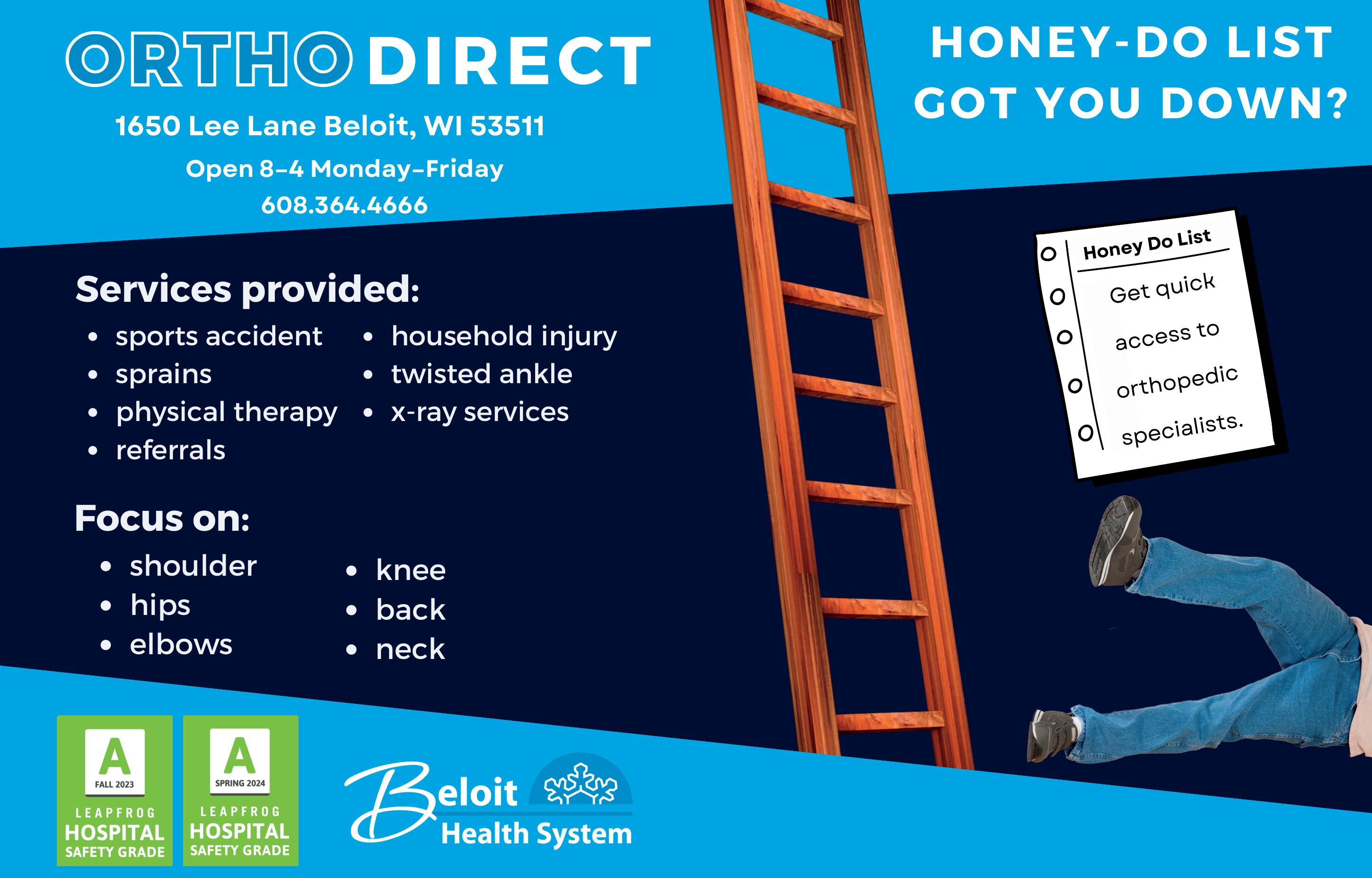&HEALTH FITNESS





How to get better sleep
Strength training benefits
Healthy eating tips







How to get better sleep
Strength training benefits
Healthy eating tips

Doctors are in the business of keeping people healthy, and one of the best ways to do so is to help individuals avoid illnesses and diseases that can make them sick.
Although few people relish the idea of needle jabs, immunizations (vaccines) remain an effective way to stay in good health.
The American Academy of Pediatrics says top disease experts work together throughout the year to update the recommended immunization schedules for children, adolescents, and adults.
Schedules are approved by the AAP, the Centers for Disease Control and Prevention, and other health care organizations. Any recommended vaccines are based on ongoing reviews of the most recent scientific data for each immunization.
An immunization schedule offers a series of vaccinations, including the timing of all doses, as recommended or required depending on one’s home country. Vaccines go through multiple phases of trials to ensure safety and efficacy. Following an immunization schedule is ideal for optimal health.
Here are a few facts to consider, courtesy of
HealthyChildren.org, a website managed by the AAP and the CDC:
• The timing of vaccines is carefully studied and recommended to work with the body’s immune system.
• People with chronic conditions or individuals on medications that weaken the immune system may need a different type of vaccine or a booster. A doctor can discuss the best approach in such situations.
• Many vaccines are administered in early childhood during infancy. Getting a child vaccinated on time is the best way to protect him or her.
• There is no research to show that a child would be equally protected against diseases if shots are spread out differently or if a varied schedule is followed. Parents and caregivers often must trust that the professionals know best with these schedules.
• If a dose is missed or a child is behind schedule, that does not require starting all over. A doctor can be consulted and the next shot
• CONTINUED ON PAGE 7


Walking has many benefits and is one of the easiest and most accessible activities that can help improve overall health. The positives of walking include boosting immune function; helping to prevent or manage conditions such as stroke, high blood pressure, type 2 diabetes, cardiovascular disease and improving muscle endurance.
People turn to many different exercises and pieces of fitness equipment to get in shape and lose weight. What they may not realize is that one of the most effective health strategies requires no additional gear except a quality pair of athletic shoes.
Walking is one of the easiest and most accessible activities that can improve overall health. In fact, walking is now being touted as “the closest thing we have to a wonder drug,” according to Dr. Thomas Frieden, former director of the Centers for Disease Control and Prevention.
Indeed, walking offers a host of benefits, including:
• Reducing the risk of developing breast cancer by as much as 14 percent, according to the American Cancer Society.
• Helping a person maintain a healthy weight and lose body fat.
• Improving cardiovascular fitness by strengthening the heart.
• Improving muscle endurance.
• Helping to prevent or manage conditions like stroke, high blood pressure, cardiovascular disease, and type 2 diabetes, according to the Mayo Clinic.
• Boosting immune function to make a person less susceptible to common viruses like the cold and flu.
• Easing joint pain associated with arthritis and even preventing osteoarthritis from developing in the first place, according to Harvard Health.
• Helping tame cravings for sweets and other fattening or sugary foods.
The faster and more frequently a person walks, the greater the benefits. One also can alternate periods of leisurely walking with brisk walking as a form of interval training to burn more calories and improve cardiovascular fitness.

There is never a bad time to turn over a new leaf, and many people begin by aspiring to eat healthier, which goes hand in hand with other health-conscious decisions individuals make.
A recent survey of hundreds of people across the globe found that 50 percent of respondents indicated they have recently or plan to set goals to eat healthier.
As people begin their journeys to a healthier lifestyle, they can consider these strategies to stay the course with a new diet.
• Do not eat too close to bedtime. A study published in the Journal of Human Nutrition and Dietetics found that eating more of a day’s total energy intake in the evening is associated with a higher risk of being overweight or obese.
The researchers behind the study concluded that eating more of the day’s energy intake at midday can lower the risk of being overweight or obese.
Sleep is a vital component of a healthy lifestyle. The National Institutes of Health says good sleep improves brain performance and mood and helps reduce the risk of many diseases and disorders, including heart disease and obesity. In fact, sleep is as important for good health as diet and exercise.
Too often people do not get enough sleep, or the sleep they do get is poor quality. Sleep needs change as a person ages, with young children and teens requiring between nine and 10 hours per night. Most adults need at least seven hours each night.
According to Dr. Kenneth Wright, Jr., a sleep researcher at the University of Colorado, a person can make up for a poor night’s sleep by sleeping in the next day, but habitual loss of sleep cannot be recuperated in a weekend.
People need to focus on sleep to feel their best.
These sleep strategies, courtesy of The Centers for Disease Control and Prevention and the NIH, can promote better sleep.
The body will adapt to a sleeping schedule when you go to bed and wake in the morning at the same time each day. Try not to vary your schedule between weekdays or weekends, or even when on vacation.
The body naturally responds to darkened conditions by stimulating the production of melatonin, which is a hormone that helps regulate the sleep-wake cycle.
Too often people keep lights on at night or look at phones or watch television, which can adversely affect melatonin production and contribute to a poor sleep environment.
Aim for daily exercise, which can make it easier to fall asleep at night. Avoid exercise a few hours before bed, however.
At least 30 minutes of sunlight and fresh air each day can promote a better night’s sleep.
Naps should be short and taken before mid-afternoon.
Skip
Caffeine consumption can impede the ability to fall asleep because it is a stimulant. Although alcohol is a depressant and can make it easy to fall asleep, the sleep that is taking place after consuming alcohol, particularly late at night, will not be quality, restorative sleep.
Heavy meals that force the body to spend hours digesting can interrupt sleep onset and quality.
A dark, cool, and quiet bedroom is a positive sleep environment. If sleeping habits do not improve after making these changes, individuals should speak with a health care provider to determine if there is an underlying condition that is compromising sleep, such as restless leg syndrome or obstructive sleep apnea. Although sleeping pills can offer relief once in a while, they should not be seen as long-term solutions to sleeping disorders. Doctor can be useful allies in helping individuals get better sleep.
(METRO CREATIVE)
Individuals are more likely to stay the course when they see positive results, so try to eat dinner several hours before bedtime and resist the urge to snack after dinnertime.
• Treat yourself, but only periodically. It’s unreasonable and potentially counterproductive to completely avoid foods seen as treats.
Cutting out indulgent foods may seem appropriate, but such an approach could make you miserable, and a diet that sparks feelings of misery will prove harder to commit to than one that allows for the occasional indulgence.
Moderation is the name of the game, and that should be a rule of thumb for both
healthy foods and indulgences. Don’t make indulgences part of your daily routine, even if you eat them in moderation. Rather, save treats for special occasions, and even then, only eat them in moderation.
• Consider eating less, but more frequently. Data is conflicting in regard to eating smaller but more frequent meals.
A study published in the Journal of the Academy of Nutrition and Dietetics found that individuals who had six or more eating occasions in 24 hours had a lower mean body mass index than people who had four or fewer eating occasions in 24 hours.
The researchers behind the study concluded that eating a larger number of small meals throughout the day may be associated with improved diet quality and lower BMI.
This approach is commonly referred to as “grazing,” and some research has indicated it has no metabolic advantage over other approaches to eating.
So, what to make of the mixed results? Dieters can decide for themselves and eat more frequent but smaller, healthier meals to combat hunger pangs that can arise when switching to a new diet.
If hunger is no longer posing a threat that can derail your diet, then this approach might increase the chances you stay committed to eating right.
People all over in a wide range of ages regularly begin quests to eat healthier in the days, months and year ahead. Some simple strategies can help them stay the course as they adjust to a new diet.



Nearly everyone knows that exercise is important, but stretching is equally essential to a healthy body. Stretching is one component of maintaining flexibility throughout life.
Flexibility is important because it can reduce injury risk. The Mayo Clinic says stretching can help improve range of motion, and this can benefit the body in many ways.
Stretching may help improve athletic performance and a person’s ability to perform daily activities, increase blood flow to muscles, and enable muscles to work most effectively.
Though stretching is key, it should be done correctly. Harvard Health says that while it might be tempting to jump right into stretches, safety is needed to maximize flexibility and reduce the chances of being injured by stretching inappropriately.
These tips can help individuals stretch
effectively.
Stretching is not a warm-up – A person can get injured if he stretches cold muscles. Before stretching, warm up with light walking, jogging, or biking at low intensity for five to 10 minutes; otherwise, stretch after the workout when muscles are warm and ready.
Don’t be pained – Stretching should only be done to the point of mild tension, and never to the point of pain. Always stop stretching immediately if there is any pain.
Stretch daily – If possible, stretch daily to keep up with flexibility and maintain range of movement.
Move slowly into stretching –Gradually move into stretching positions and never jerk or snap suddenly into position.
Aim for stretching symmetry – Stretch both sides of the body similarly. It’s a goal to have equal flexibility side to side, but
A resting heart rate can be a good indicator of health. According to the Mayo Clinic, a lower heart rate at rest implies more efficient heart function and better cardiovascular fitness, generally speaking. Athletes tend to have lower normal resting heart rates than non-athletes. Conversely, an unusually high resting heart rate may signify an increased risk of heart disease or another medical condition, advises Harvard Health.
While the official stance on resting heart rate for adults indicates it should range from 60 to 100 beats per minute (bpm), most healthy adults fall between 55 and 85 bpm. However, certain people may fall outside of this range and still be healthy.
Penn Medicine says resting heart rate generally should not be too fast or too slow and should not fluctuate all that often.
What qualifies as a healthy resting heart rate changes as one ages. In fact, heart rates for children are much different from adults.
• Newborn babies: 100 to 205 bpm
• Infants under 1 year: 100 to 180 bpm
• 1 to 2 years: 98 to 140 bpm
• 3 to 5 years: 80 to 120 bpm
• 6 to 7 years: 75 to 118 bpm
• Older children and teens: 60 to 100 bpm
• Adults: 60 to 100 bpm
Men and women differ slightly in resting heart rate.
The National Institutes of Health says the average adult male heart rate is between 70 and 72 bpm, while the average for adult women is between 78 and 82 bpm. This is due in large part to the fact that men have larger hearts than women. This occurs even after accounting for age and physical fitness.
There are ways to lower resting heart rate. Exercise, quitting smoking and relaxing to reduce stress and anxiety can promote a low resting heart rate.
(METRO CREATIVE)

keep in mind that genetics may make one side more flexible than another.
Don’t bounce – Bouncing while stretching can injured muscle and actually contribute to tightness.
Breathe while stretching – Always breathe through stretching; do not hold your breath.
Pay attention to form – Poor posture can cause muscles to shorten and tighten.
Therefore, do not counteract stretching by using poor posture while sitting, standing, or moving. Those who have concerns about posture can work with a physical therapist to learn strategies for improving posture and flexibility.
Stretching is a key component of a healthy lifestyle and a great way to reduce risk for injuries that can curtail exercise plans.
(METRO CREATIVE)

Though stretching is key, it should be done correctly. Harvard Health says that while it might be tempting to jump right into stretches, safety is needed to maximize flexibility and reduce the chances of being injured if stretching inappropriately.


Are you ready to dig into a bowl of delicious blueberries? Perhaps you’re adding a handful to your morning smoothie? Regularly eating blueberries is not only tasty, it can be excellent for your overall health.
While the term “superfood” has become controversial because it is now seen as a marketing ploy and there’s no standardized list of criteria to designate a food as “super,” blueberries have often been touted as especially nutritious. That’s because blueberries are not only low in calories, they’re full of nutrients the body needs to thrive.
Healthline indicates blueberries are among the most nutrient-dense berries. A cup contains only 85 calories, and in that serving a person can enjoy 3.6 grams of fiber, 16 percent of the daily value (DV) of vitamin C; 24 percent of the DV of vitamin K; and 22 percent of the DV of manganese.
One of the main benefits of blueberries is that they are rich in antioxidants. Produced as a natural result of metabolism or exposure to pollution, cigarette smoke, and alcohol, free radicals are molecules that damage cells over time.
Antioxidants create barriers around cells to help protect them from damage by free radicals.
The Cleveland Clinic says that the high soluble fiber content of blueberries can make them strong allies in the fight against cholesterol. Soluble fiber binds to bile in the gut. Bile is made of cholesterol and other substances that need to be removed from the body. Lowering cholesterol helps prevent or reduce risk of heart disease.
In relation to heart health, blueberries also may help reduce blood pressure, which can be beneficial for the heart and brain.
Healthline reports that in an eight-week study, people with obesity who had high risk of heart disease noted a 4 to 6 percent reduction in blood pressure after consuming two ounces of freezedried blueberries per day. Additional studies have uncovered similar blood pressure-lowering abilities of blueberries.
Individuals concerned with keeping their brains sharp may want to consider adding blueberries to the mix of foods they eat regularly.
A study in The American Journal of Clinical Nutrition uncovered cognitive function improved when participants ate about 3⁄4 cup of blueberries per day. Since blueberries lower blood pressure, more blood can flow to the brain, which improves cognitive function.
Blueberries also are low in sugar and high in fiber, which gives them a low glycemic index. This means blueberries can potentially control blood sugar levels.

A well-rounded fitness regimen for people of all ages should be made up of various components, including strength training. Strength training – or weight training – can be mischaracterized as an activity best suited to individuals looking to bulk up. However, strength it’s about much more than maxing out on the bench press.
According to the Centers for Disease Control and Prevention, musclestrengthening activities reduce the risk of falls and fractures, which is a notable benefit for adults of all ages, and particularly so for adults nearing an age where they might experience mobility issues.
The National Institute on Aging notes that studies indicate as many as 3 in 10 individuals over age 70 experience mobility issues that affect their ability to walk, get up out of a chair, and climb stairs.
Adults in middle-age, and even those for whom retirement remains farther in the distance, can prevent such issues by incorporating strength training into their workout regimens.
Novices who want to do just that can heed these tips to avoid injury as their bodies acclimate to strength training.
Fitness facilities typically have highly trained and knowledgeable personal trainers who can teach members the proper techniques in regard to various strength-building exercises.
Many facilities offer one or two free personal trainer consultations to new members, and it’s best that people of all ages take advantage of such benefits.
Even if sessions are not complementary, working with a personal trainer is a great way to learn proper form, which is vital to avoiding injury. Furthermore, they can be helpful in creating a routine that’s safe and adjusts over time in line with progress.
The Mayo Clinic notes that cold muscles are vulnerable to injury, so individuals should never begin weight training sessions without a pre-workout warmup.
The fitness experts at Gold’s Gym note that 10 minutes of light cardiovascular exercise on a treadmill, stationary bike, or elliptical machine before strength training can increase range of motion, decrease risk for injury, and help to create more change in muscles.
If necessary, include a foam roll and stretch exercise in your warmup, targeting the muscles that will be used during the ensuing weight training session and any muscles that seem particularly tight. Foam rolling each muscle for 20 to 30 seconds can help to loosen them in advance of a workout.
The adage “Rome wasn’t built in a day” is certainly applicable to weight training.
Initial weight training sessions should involve light weights as the body acclimates to a new workout and individuals master the form for each exercise.
Weight can be gradually increased as individuals acclimate to lifting weights, a
process that the Mayo Clinic suggests can unfold over two to four weeks.
It’s important to keep in mind however, that each individual is different, so if it takes longer than four weeks to add weight, so be it. The key in the early days is to master the form and help the body adjust.
The Mayo Clinic notes that using momentum during a set can lead to injury, because the goal is not to swing or lift the weights as quickly as possible.
Slow repetitions that take about two seconds to lift the weight and four or more seconds to lower it can reduce injury risk.
Another advantage of those slow repetitions is that it can activate muscle fibers in the targeted muscles, which makes strength training more effective over the long haul.
Rest is a vital part of a successful weight training regimen, and it’s especially important for novices to rest in between sessions. The Mayo Clinic recommends resting muscles for at least 48 hours.
Do not ignore sharp or shooting pain or assume it’s a natural byproduct of the transition to strength training.
Cease performing any exercise that causes such pain and consult your physician about what to do.
Weight training promotes long-term health, and beginners need not be intimated by hitting the gym to build strength.
(METRO CREATIVE)
Diet and exercise are the key components of maintaining a healthy weight and protecting yourself against chronic disease.
According to the Missouri Department of Health & Senior Services, eating smart and being active have similar effects, including reducing risk for heart disease, high blood pressure, stroke, some cancers, and diabetes.
In addition, these healthy living strategies can improve personal appearance and improve overall well-being– helping people live longer and maintain their independence.
People may wonder how to eat better when faced with many diets, each of which promises great results. It can be confusing when navigating all of the options, and there is no magic formula to eating better.
Common sense can come into play when attempting to eat better, and individuals also can consider these strategies to make diet work for them as they seek to live healthier.
Eat colorful, varied, nutritionally dense foods. Medical News Today says each meal should be 50 percent fruit and vegetables, 25 percent whole grains, and 25 percent protein. Select an array of colorful, varied, nutritionally dense foods that will provide most of the nutrients needed.
While you should avoid fad diets that often produce short-term but unsustainable results, a Mediterranean diet has stood the test of time.
According to the authors of a study published in JAMA Network Open late in 2023, middle-aged and older adults with overweight or obesity and metabolic syndrome lost visceral fat (belly fat) and showed a greater reduction in the percentage
of total fat while adhering to a Mediterranean diet. They also had delayed loss of lean body mass, which often comes with aging. Mediterranean diets prioritize legumes, seafood, vegetables, and “good” fats like olive oil.
Fresh fruits and vegetables, whole grains, nuts, and legumes are good sources of fiber. Fiber helps people maintain digestive health and can help you to feel fuller longer, reducing the potential for overeating, according to the Centers for Disease Control and Prevention.
Create a food journal where you jot down notes about how you feel after eating certain foods. If you notice that certain foods or ingredients trigger adverse reactions, it may be worth avoiding that type of food or looking for an alternative. Stomach upset or bloating after eating dairy, for example, may indicate an intolerance for lactose.
Sometimes it’s not what you eat but how much you eat that affects health. Weighing and measuring food can help you control portions and understand how many calories you’re consuming each day.
The National Institute of Health says eating plans that favor 1,200 to 1,500 calories per day for women and 1,500 to 1,800 for men are good targets to lose weight at a healthy pace when combined with moderate exercise.
Balanced eating is a major component of a healthy lifestyle. While there are many fad diets, eating plans with a proven track record that are supported by the medical community may be your best bet.
(METRO CREATIVE)

Engaging in fitness activities that are enjoyable can increase the likelihood that a person will remain committed to routine exercise.
In addition to being fun, swimming is an exercise that benefits the entire body. It’s also ideal for people of all ages, as the buoyancy of water reduces the strain on muscles and joints.
Healthline reports that an hour of swimming burns almost as many calories as running, without all the impact to the bones and joints.
Many people who commit to swimming each week may have no problem getting the recommended 150 minutes of moderate activity or 75 minutes of vigorous activity each week recommended by various health organizations.
Here are some of the ways swimming is good for your body.
• It engages the entire body: Swimming works just about all the muscles of the body. Various swimming strokes can enable a person to focus on certain muscle groups, if desired.
• It’s a thorough cardiovascular workout: Swimming increases heart rate

without stressing the body. The fitness level can be customized and gradually built up so that one can increase strength and endurance.
• It reduces body fat: Swimming can help many people slim down. According to Harvard Medical school, a 155-pound person can burn about 432 calories swimming versus about 266 calories walking at a moderate pace for the same duration of time.
A recent study published in BMC Sports Science, Medicine and Rehabilitation revealed that 16 weeks of
swimming led to significant reductions in body fat and BMI among those studied.
• It improves heart health: Research has linked swimming to a reduction in blood pressure and additional benefits related to improved cardiovascular health.
• It enhances lung volume: Swimming involves deeper breathing and can strengthen the muscles involved with respiration, says Everyday Health.
• It can improve quality of life: Older adults who swim may experience decreased rates of disability and improved quality of life.
Swimming helps to improve or maintain bone health, particularly among postmenopausal women. Water-based exercise also is low-impact and builds strength.
• It offers a mental health boost: The Centers for Disease Control and Prevention notes that swimming can improve mood in both men and women. Swimming may decrease anxiety, and exercise therapy in warm water can improve symptoms of depression.
These are just some of the health benefits associated with swimming.
(METRO CREATIVE)
• CONTINUED FROM PAGE 2
in a series can be scheduled as soon as possible.
• Adults receive far fewer vaccines than their younger counterparts. According to the CDC’s most recent vaccine schedule, these are some of the shots adults should discuss with their doctors.
– COVID-19 (one or more doses of updated 2023-2024 formula)
– Influenza (one dose annually)
– Respiratory Syncytial Virus (seasonal administration during pregnancy)
– Tetanus, diphtheria, pertussis (Td or Tdap booster every 10 years, unless pregnant, then one dose Tdap each pregnancy)
– Measles, mumps, rubella (one or two doses depending on indication if born in 1957 or later)
– Varicella (two doses if born in 1980 or later)
– Zoster recombinant (two doses at age 50)
Following an immunization schedule is one way to maintain personal health. Any questions or concerns about vaccines should be discussed with a primary care doctor or another trusted health professional.
(METRO CREATIVE)
Luella M. Guzman-Price MD, FAAP Pediatrician


Laura Koenig, MD Internist


Kimberly Knudsen CCC-A, Au.D. Audiologist
Molly Larson, MD Obstetrician & Gynecologist
Lauren P. Mayer, APNP Pediatric Nurse Practitioner


BethAnn Nowak MSN, AGPCNP-BC, APNP Adult Gerontology Primary Care Nurse Practitioner
Angela Schuldies
MSN, APRN, PMHNP-BC
Psychiatric Mental Health Nurse Practitioner


Thomas Tackman, MD Internist
